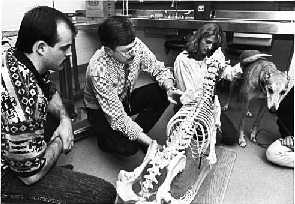- In safe hands
- Rest assured, parents: A national study shows that child care itself does not harm a mother's bond with her child.
If the mother's interaction with her infant is sensitive, then the child is likely to develop a secure relationship with her, regardless of child-care arrangements.
including father care, grandparent care, care by a nonrelative in the child's home, family day care and center-based care. Vandell and colleagues found that nonmaternal child care by itself does not constitute a threat to the security of the infant-mother bond: If the mother's interaction with her infant is sensitive,then the child is likely to develop a secure relation-ship with her, regardless of child-care arrangements. On the other hand, the study showed evidence that child care can add to the risks already inherent in maternal insensitivity. That is, when mothers are relatively insensitive and unresponsive to the needs of their infants, child-care conditions can exacerbate those troubled relationships. Those conditions include child care that is of poor quality, changes frequently or extends beyond 10 hours a week. To assess the security of infants' attachment to their mothers, Vandell and the other investigators used a laboratory measure known as the "strange situation" procedure. It is designed to expose infants - at age 15 months, in this case - to mild stress by separating them from their mothers for a few minutes. Secure infants reestablish positive contact with their mothers following these brief separations, while insecure infants either ignore and avoid their mother or are not reassured by her return. The study also confirmed that higher-quality child care comes with smaller groups of children, more adults per child and more sensitive caregivers. Those factors give children great stimulation and attention. Ranked lowest by those criteria were child-care centers, and ranked highest were care by fathers or relatives or by a caregiver in the home. Next up for Vandell and the study: an exami-nation of children's bonds to their mothers at 3 years old, as well as their cognitive and language development, physical development, health, behavior and relationships with peers.
- Dog's best friend
- Thanks to hip-replacement surgery techniques originally perfected for humans, Rover can roll over.

Approximately 90 percent of dogs who undergo hip replacement surgery at UW-Madison's Veterinary Medicine school return to full function.
experiencing total hip replacement surgery will return to full function, he says. Surgery also can be performed on younger dogs to head off dysplasia. Procedures average $1,000 to $2,000, which, considering the success rate, some consider a bargain. Says Huncosky of Chess, "She's my family, and I would definitely do it all over again."

